
Andrea Mantegna was an Italian Renaissance painter, a student of Roman archeology, and son-in-law of Jacopo Bellini.

Guido Reni was an Italian painter of the Baroque period, although his works showed a classical manner, similar to Simon Vouet, Nicolas Poussin, and Philippe de Champaigne. He painted primarily religious works, but also mythological and allegorical subjects. Active in Rome, Naples, and his native Bologna, he became the dominant figure in the Bolognese School that emerged under the influence of the Carracci.

Pinturicchio, or Pintoricchio, also known as Benetto di Biagio or Sordicchio, was an Italian Renaissance painter. He acquired his nickname because of his small stature and he used it to sign some of his artworks that were created during the fifteenth and sixteenth centuries.

Pietro Perugino, an Italian Renaissance painter of the Umbrian school, developed some of the qualities that found classic expression in the High Renaissance. Raphael became his most famous pupil.
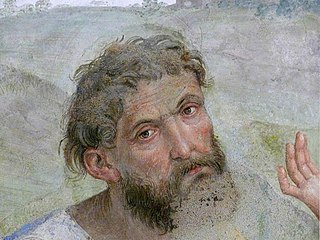
Lo Spagna, "the Spaniard" in Italian, was a painter of the High Renaissance, active in central Italy. His name was Giovanni di Pietro, but he was known as Lo Spagna because he was born in Spain. After Raphael, he was a main pupil and follower of the Umbrian painter Perugino, whose style his paintings developed. He should not be confused with Pietro di Giovanni D'Ambrogio of Siena.

Saint Sebastian is the subject of three paintings by the Italian Early Renaissance master Andrea Mantegna. The Paduan artist lived in a period of frequent plagues; Sebastian was considered protector against the plague as he had been shot through by arrows, and it was thought that plague spread abroad through the air.
Francesco Botticini was an Italian painter of the Early Renaissance. He was born in Florence, where he remained active until his death in 1498. Although there are only few documented works by Botticini, a considerable corpus has been confidently attributed to him on the basis of style including a number of altarpieces, dozens of small-scale religious panels and a few portraits.
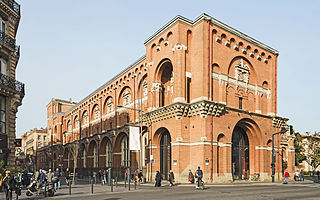
The Musée des Augustins de Toulouse is a fine arts museum in Toulouse, France which conserves a collection of sculpture and paintings from the Middle Ages to the early 20th century. The paintings are from throughout France, the sculptures representing Occitan culture of the region with a particularly rich assemblage of Romanesque sculpture.
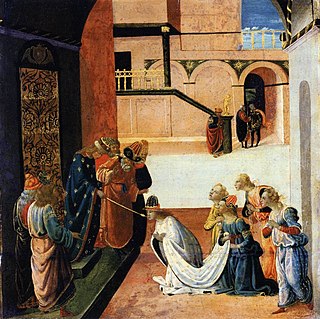
Jacopo del Sellaio (1441/42–1493) was an Italian painter of the early Renaissance, active in his native Florence. His real name was Jacopo di Arcangelo. He worked in an eclectic style based on those of Botticelli, Filippino Lippi, and Domenico Ghirlandaio. The nickname Sellaio derives from the profession of his father, a saddle maker.
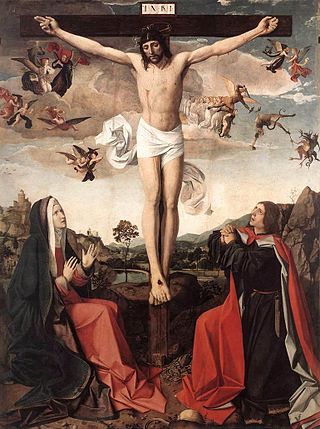
Josse Lieferinxe was a South Netherlandish painter, formerly known by the pseudonym the Master of St. Sebastian.

The National Art Gallery of Bologna is a museum in Bologna, Italy. It is located in the former Saint Ignatius Jesuit novitiate of the city's University district, and inside the same building that houses the Academy of Fine Arts. The museum offers a wide collection of Emilian paintings from the 13th to the 18th century and other fundamental works by artists who were in some way related to the city.

The Battle Between Love and Chastity is a painting by the Italian Renaissance artist Pietro Perugino, now in the Musée du Louvre, in Paris, France. It was originally commissioned for the studiolo (cabinet) of Isabella d'Este, Marchesa of Mantua, in the Castello di San Giorgio.

The San Pietro Polyptych is a polyptych by Italian Renaissance master Perugino, painted around 1496–1500. The panels are now in different locations: the lunette and the central panel, depicting the Ascension of Christ, are in the Museum of Fine Arts of Lyon, France.
The Martyrdom of St Sebastian may refer to:
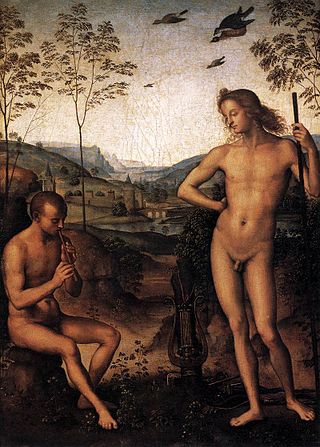
Apollo and Daphnis is a c.1483 mythological painting by Perugino. It was sold to the Louvre in Paris in 1883, where it still hangs and in whose catalogue it was known as Apollo and Marsyas. By the 1880s it had become misattributed to Raphael.

The Sant'Agostino Altarpiece is a painting by Perugino, produced in two stages between around 1502 and 1512 and then around 1513 to 1523. The altarpiece's 28, 29 or 30 panels were split up during the Napoleonic suppression of religious houses - most of its panels are now in the Galleria Nazionale dell'Umbria in Perugia. It is notable as the painter's last masterwork before he moved into his late phase producing more provincial commissions.
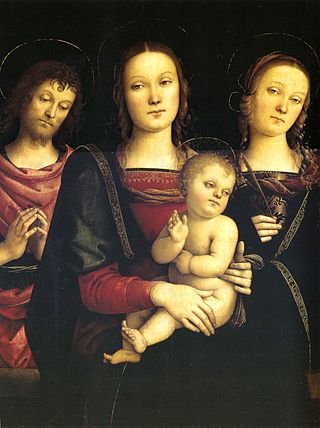
Madonna and Child with St John the Baptist and St Catherine of Alexandria is a c.1495 oil on panel painting by Perugino of the Madonna and Child with John the Baptist and Catherine of Alexandria. It is now in the Louvre in Paris.

St Sebastian is an oil on panel painting by Perugino, completed c. 1490. The painting has been in the Nationalmuseum in Stockholm since 1928. It is one of the artist's earliest depictions of Saint Sebastian, showing him as an ephebos, or male adolescent, unlike his later treatments based on the Doryphoros, such as that in the Louvre. It is signed "Petrus Perusinus pinxit".

Madonna and Child with St Rose and St Catherine is a c. 1490–1492 tondo oil on panel painting by Pietro Perugino and Andrea Aloigi. It shows the Madonna and Child with Rose of Viterbo and Catherine of Alexandria surrounded by angels. It was sold from the collection of William II of the Netherlands in 1850 to the Louvre in Paris, where it is now on display.

















